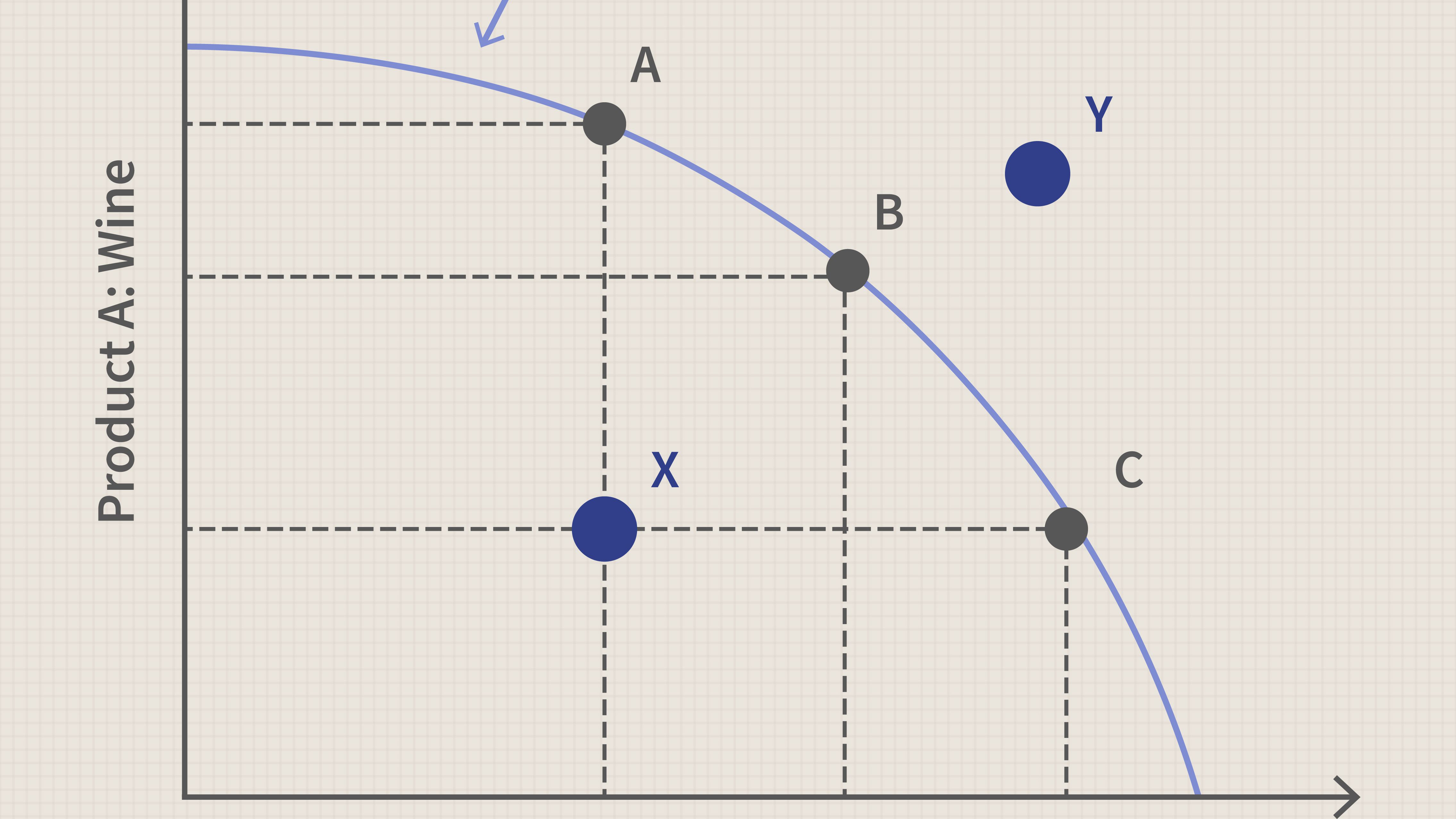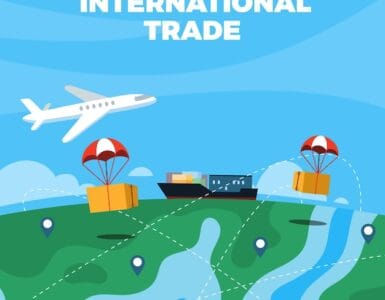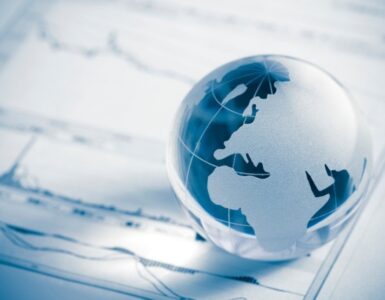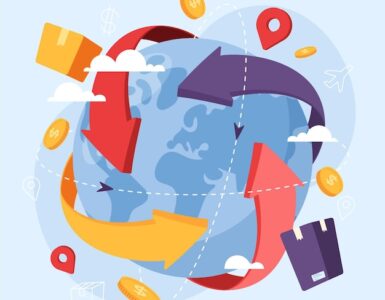/dotdash_Final_Production_Possibility_Frontier_PPF_Apr_2020-01-b1778ce20e204b20bf6b9cf2a437c42e.jpg)
- International trade is the lifeblood of the world economy, but is subject to constant change from economic, political and environmental forces.
- Emerging economies have seen their share of total global trade rocket in recent years.
- China, for instance, is now responsible for 15% of all world exports.
- Unfinished goods, components and services account for 70% of all trade.
- While trade in services accounts for two-thirds of global GDP, COVID-19 has had a devastating impact on trade patterns.
International trade is the lifeblood of the world economy, providing the goods and services that are traded across borders to bring wealth and prosperity to nations.
But how exactly does it work? The Organization for Economic Cooperation and Development (OECD) has attempted to unpack it all in the following three charts.
Contents
How trade works
International trade flows along hugely complex supply chains between nations that source raw materials, to manufacturing countries that make and process them, and then on to consumer nations, which put the final products to use.
When trade is allowed to flourish, the nexus of supply routes, suppliers, processors and consumers behaves like a living thing. When change happens at any one link in the chain – say, when a miner of iron ore goes bust, or when the price of the metal suddenly rises – that will reverberate along the chain.
Change can come from a variety of stimuli. Fluctuating consumer demand for goods, technological innovations and new ways of moving products around the globe are among the most common.

The rise of emerging markets
Over time, the nature of trade and the products carried will be markedly transformed, and that can have huge implications for national economies.
This is most strikingly seen in the economic rise of China. Once an impoverished nation, it is now the world’s second-largest economy and the largest outbound trader of goods, accounting for almost 15% of all exports, according to United Nations data.
Have you read?
- Coronavirus could reduce world trade by up to a third, according to the WTO
- What the future holds for world trade, according to 8 global leaders
- We need a new consensus on global trade. Here’s why
Emerging markets more broadly have also been steadily growing, as the chart above shows. The lower wages, plentiful land and accommodative governments found in these countries provide manufacturers with a source of low-cost production.
With unfinished goods, components and services now accounting for 70% of all trade, emerging markets such as the BRIICS countries – comprising Brazil, Russia, India, Indonesia, China and South Africa – are the largest beneficiaries of this development, their share of total global trade rocketing in recent years.

Obstacles to trade in services
Trade in services is also vital to a country’s economic health. The international exchange of ideas, expertise and assistance – from architecture and law to logistics and telecommunications – account for half of all global exports and two-thirds of global GDP.
For that reason, they are vulnerable to political manipulation to protect particular domestic industries or to put pressure on other nations. The threat of non-tariff barriers – which include quotas on imports and subsidies to make local producers more competitive than foreign imports – and tariffs can change patterns of trade.

The importance of trade agreements
Protectionist measures like these often have unintended consequences and create geopolitical friction. To guard against that, and to maximize the benefits of exchanges with favourable partners, multilateral trade agreements have flourished since World War II.
The creation of groupings like the World Trade Organization, which grew out of the General Agreement on Tariffs and Trade, helped in the creation of the globalized trade structures we see today. They have also helped prevent trade rows between nations from escalating into global trade wars.
The trade map is always changing
Even so, trade patterns remain under threat of sudden revulsion. Geopolitical risks and unexpected natural disasters can all alter their delicate balance.
Climate change is also expected to have a huge impact on world trade. This has been highlighted in the past two years when the COVID-19 pandemic radically reshaped the entire global trading network. Virus-mitigation lockdowns, labour shortages, slumping demand for some goods and rising demand for others all helped to tear up the trade map.
[“source=weforum”]

















